Review: Jawbone Prime
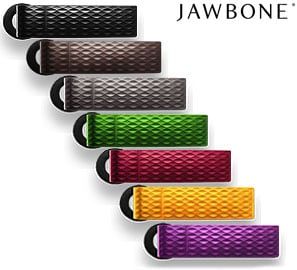
Some time ago we reviewed the Jawbone Bluetooth headset by Aliph and found it to be an all-around quality headset with excellent audio quality and noise filtration. A few months ago, Aliph's released the successor to the original, the Jawbone Prime.
Stated Aliph CEO and co-founder Hosain Rahman in a press release:
“We watched our customers closely and saw how they struggled to be heard in extreme noise environments. So, we focused our engineering team to go deeper on the tough problems like crying babies, pounding jackhammers, beeping elevators and the like. As a result, we are excited to announce Jawbone PRIME, with orders of magnitude better noise suppression, so our customers can continue their conversations wherever they happen to be.”
We were curious if the Jawbone Prime performed as well as the original Jawbone did and took the Jawbone out for a test drive with the AT&T Fuze. After the break, you can see product shots and our observations in using this new Bluetooth headset.
Out of the Box
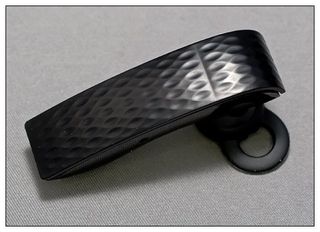
The Jawbone Prime is a solidly constructed, slick looking Bluetooth headset. It comes packaged with various sized ear buds (with and without loop), a wire thin ear hook, a leather wrapped ear hook (dubbed "premium ear hook"), USB charge cable, wall charger adapter, and a very thorough user manual. The Jawbone Prime measures 2.1 inches long, 1 inch wide and 0.6 inches thick. The Bluetooth headset weighs in at 0.4 ounces.
There are no external buttons on the Jawbone Prime and just like the original, volume keys would have been nice. The Prime does have two buttons under the diamond cut surface. A paper thin LED sits on the surface of the Prime that helps confirms certain features. The only problem I had with the LED is that when you press the forward button your thumb covers it up making it difficult to confirm feature activations.
Voice Activation Sensor and Noise Assassin
The cornerstone of the Jawbone headsets is the ability to filter out background noise and to provide the best audio experience ever. They do this through two key features, the Voice Activation Sensor and the Noise Assassin technology.

The Voice Activation Sensor is the little white nub on the bottom of the Jawbone Prime that rests against your cheek. While the two microphones of the Jawbone Prime does a good job of picking up audio, the Voice Activation Sensor (VAS) helps detect when your speaking and captures the frequencies of your speech to improve the audio quality.
Get the Windows Central Newsletter
All the latest news, reviews, and guides for Windows and Xbox diehards.
The Noise Assassin 2.0 is being touted as an improvement from the original Jawbone in that in the noisiest environments (6 to 9dB) it filters out more noise while keeping the user's voice natural. By default, the Noise Assassin is active but it can be disabled.
Jawbone also utilizes a Acoustic Voice Activity Detector (AVAD) that acts as a fail-safe mechanism should the VAS not come into contact with your face. With the original Jawbone, the VAS had to be in contact with your face to operate. With the Prime, it works best if the VAS is in contact with your face but will function otherwise.
Performance
Setting up your Jawbone Prime is a piece of cake and the Owner's Manual walks you through the process rather nicely. From finding the right sized ear bud to pairing the Jawbone Prime with the AT&T Fuze was effortless and took only a few minutes. The Prime has two buttons beneath the surface of the headset. There is a vertical indention in the design that separates the buttons' location.
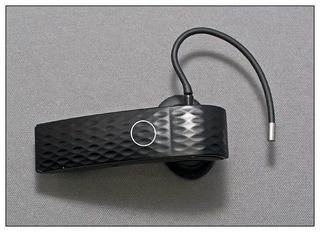
To the front of the indention is the button that controls the power, answer/end, LED disable functions. The button to the rear of the indention controls the Noise Assassin feature, Call reject, cycles through the volume, redials the last number and initiates voice dialing (phone dependent). Different taps, presses and holds of each button distinguish the feature it controls.
The first time you turn on the Jawbone Prime (pressing the front button and holding it for two seconds) the headset goes into pairing mode. It is then a matter of getting your phone to recognize the headset and, if necessary, enter the super secret code. The Jawbone Prime can be paired with up to eight devices.
While having the buttons concealed beneath the surface makes for a sleeker appearance, I would have liked to have seen a dedicated power and volume controls. While the rear button cycles through preset volume levels, I found myself initiating redialing or voice dialing while cycling the volume. A dedicated power button is convenient, eliminates the need to press/hold a button and you can tell at a glance if your headset is on or off.
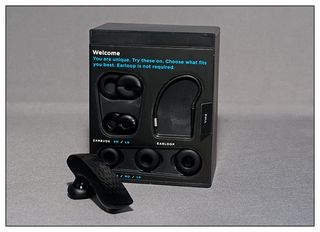
The Jawbone Prime was comfortable to wear and light enough not to feel like your ear was weighted down. Choosing the right sized ear bud is important and as the box mentions, the ear hook is not required. However, while the headset rides comfortably and securely the ear hook adds to the secure ride without creating discomfort. One note with regards to the different styled ear buds is that the ones with the loop push the Jawbone towards your face just enough to keep the VAS in contact with your cheek. The buds without the loop have a tendency to allow the VAS to loose contact with your face.
While the science behind the Jawbone Prime sounds impressive, the crucial measure is how it performs with every day use. Sound and audio quality was very good. Dieter did a demo (see video below) on the noise filtration when he reviewed the original Jawbone and I'd have to rate the Jawbone Prime's performance just as good, if not a hair better, than the original.
The car stereo wasn't an issue, driving with the car windows down wasn't a problem and surrounding traffic noise wasn't noticeable. The Jawbone Prime filtered out the background noise extremely well, putting my voice at the forefront.
Aliph reports battery life for the Jawbone Prime to be approximately eight days of standby time and 4.5 hours of talk time. Based on battery performance during my test drive, I won't dispute Aliph's claims. The LED light will begin to flash red when the battery level begins to get low and with the ability to charge the Prime through a USB port on a computer or with the wall charger, power shouldn't be a problem. Oh, and instead of going from red to green during a charging cycle (approximately fifty minutes) the Jawbone Prime's LED goes from red to white.
Overall Impression
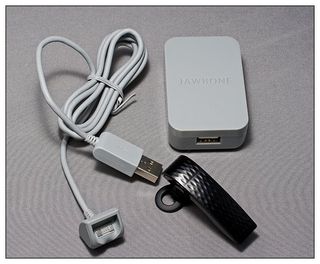
Personally, I'm partial to Bluetooth Speakerphones such as the Jabra SP200 for the car but if Bluetooth headsets are your preference the Jawbone Prime should definitely make your short list.
Voice and audio quality was amongst the best (if not the best) I've experienced in a Bluetooth headset. The absence of above-surface buttons took a little time to get used to. While I would have liked to have seen a dedicated power or volume control, that's more of a personal preference than a detraction from the headset.
The biggest drawback on the Jawbone Prime might be the cost. At just under $120 it is the more costly Bluetooth headset on the market. It is the "Cadillac" of headsets and while the performance and build quality is impressive, justifying the cost is an individual choice. You can find just as nice a headset at a lower cost (e.g. the Motorola H15) but I don't know if you'll match the Jawbone's performance.
The Jawbone Prime comes in three metallic color schemes (platinum, coffee (brown) and black) and the Jawbone Prime Earcandy Edition is available in four vibrant colors (lime green, scarlet red, yellow, and lilac). To see what styles are in stock, head on over to our favorite accessory store.
Overall: 5/5





| ProsQuality ConstructedComfortable fitExcellent Sound/Audio QualityConsSub-Surface Buttons take a little getting used to |
Phil is the father of two beautiful girls and is the Dad behind Modern Dad. Before that he spent seven years at the helm of Android Central. Before that he spent a decade in a newsroom of a two-time Pulitzer Prize-finalist newspaper. Before that — well, we don't talk much about those days. Subscribe to the Modern Dad newsletter!

